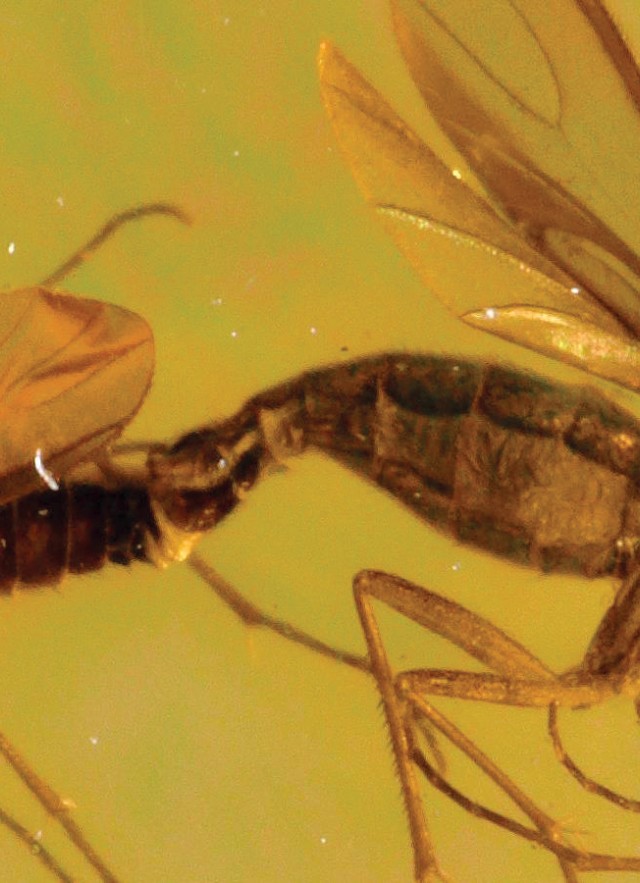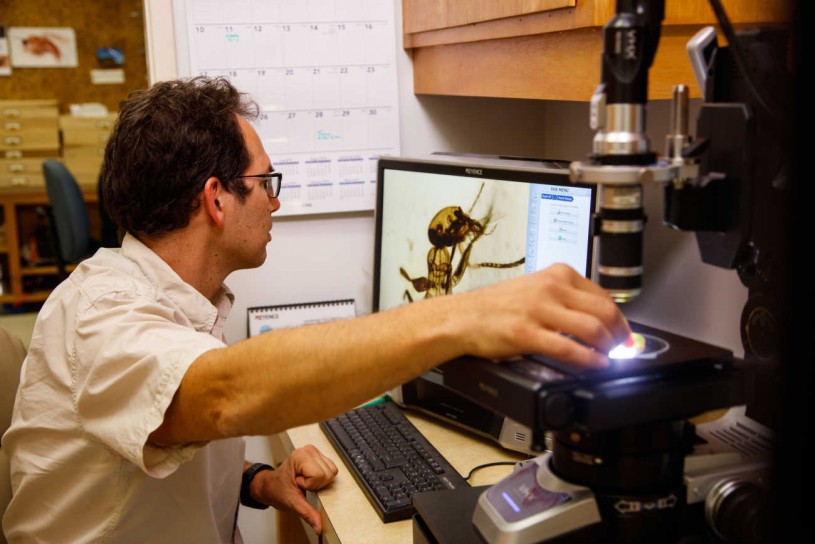The Hart Museum remains closed. Los Angeles County has approved a plan to transfer the William S. Hart Museum and Park from the County to the City of Santa Clarita.
Trapped in Amber
New amber in the entomology collections record past animals’ behavior.

Twenty million years ago, two flies got to mating. And then they got trapped in tree resin that eventually became amber … so now they’re stuck like this forever.
While it’s a little awkward for them, it’s very useful for us. Not only does it give entomologists a view of animal behavior, it also allows us to match up the male and female forms of this species, which is otherwise nearly impossible to do because they look so different.
Insects Trapped In Amber Help Entomologists
This amber specimen is part of a larger collection recently accessioned into our Entomology Collections. The impressive assemblage of amber — about 1,000 pieces in total — comes from Dr. David Penney from Manchester, England. Much of the material is 20-million-year-old Dominican amber, which has many interesting insects trapped inside it, including flies, lice, beetles, ants, butterflies, moths, and many others. And the mating flies above aren’t the only type of behavior captured within these amber pieces. Other specimens show behaviors like laying eggs, parasitizing another animal, and swarming.
Entomology Curator Brian Brown is interested in using this collection of rare amber to understand what these bugs were like long ago and how they have changed. What they ate, where they lived, how they interacted — these are all things researchers like Brown want to understand.

“Insects have been dominant animals ever since they appeared on land, both in terms of diversity and biomass. They really control ecosystem function,” says Brown. “And thanks to amber, we can see them in such detail, it gives us a way to look more comprehensively at ancient ecosystems.”